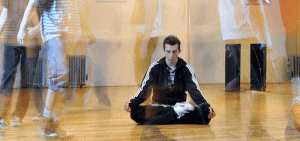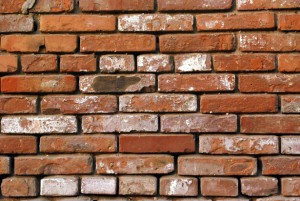Saturday
Featured StoriesBrick by Brick
Reflections on meditation practice and living with mental illness
by David Engelbrecht
 There is a mindfulness revolution happening in the world today. Nowadays, mindfulness is part of many therapies. The first time I saw the word was on the title of a psychotherapy workbook for clients. I felt it would change my life.
There is a mindfulness revolution happening in the world today. Nowadays, mindfulness is part of many therapies. The first time I saw the word was on the title of a psychotherapy workbook for clients. I felt it would change my life.
I have been living with mental illness since the fourth grade and addiction since age 16. Before mindfulness and meditation (shamatha) became part of my life, my mental health recovery was mostly based on medication and cognitive behavioral therapy (CBT). I have found that my meditation practice has made CBT more effective.
CBT looks at the cognitive distortions my negative automatic thoughts have. But for it to be effective, I first have to be aware I have these thoughts. The activating event could be anything. It could all start when I’m watching TV. I might see a married couple my age with children. The negative automatic thoughts start without my awareness: I don’t have a wife or any children. I’m 41 and it is too late to start a family. Nobody would ever marry me because I don’t have a great career or a lot of money. Who would be there when I’m old and sick and dying. I will die alone, in a dimly lit room in a convalescent hospital (I might have memories of the skilled nursing facility I was in when I was 25). The theme of this stream of thoughts is loss. I start to feel depressed. These thoughts are mixed with images (visions of how the future will be or memories of what happened in the past). A downward spiral could start and I might have another major depressive episode.
When we notice our attention is no longer on the breath during meditation, we let go of the thinking (storyline) and return to the breath. We do it non-judgmentally. A thought is just a thought. There are no good thoughts or bad thoughts. We don’t analyze. In CBT, we write down our thoughts and look for cognitive distortions. I have found my meditation practice has made CBT more effective. Meditation has made it easier for me to identify these distortions as they happen in the moment because I have become more familiar with and have more awareness of how my mind works (but writing them down and taking a look at them is still helpful). When depressed, I can ride the energy wave of the mood and not increase the duration of the episode by mindlessly indulging in these thoughts and images. That is, I can let the mood live out its natural lifespan without increasing it with fuel (more negative automatic thoughts). Different moods and emotions will come and go. I can not stop this from happening. I have to radically accept this. However, I do have control over not making them worse (i.e., not increasing the duration).
 In Turning the Mind into an Ally, Sakyong Mipham Rinpoche writes: An emotion that feels as big as a house can be dismantled brick by brick. In dismantling, we use the emotion as the object of meditation. Emotion is a response to something or somebody. It isn’t premeditated or logical in any way. The way dismantling works is that we engage the missing element: reason. We begin investigating the feeling: “Why am I jealous? What has made me feel this way?” For a moment we rest our mind on these questions instead of the breath. The more reason we have, the more effective our ability to dismantle will be. In contemplating the reasons that our negative emotions have come together – and how they create pain, suffering, and anxiety – we can begin to take them apart. With reason we see the source of the emotion: what somebody said to us, the disappointment of an expectation we were holding.
In Turning the Mind into an Ally, Sakyong Mipham Rinpoche writes: An emotion that feels as big as a house can be dismantled brick by brick. In dismantling, we use the emotion as the object of meditation. Emotion is a response to something or somebody. It isn’t premeditated or logical in any way. The way dismantling works is that we engage the missing element: reason. We begin investigating the feeling: “Why am I jealous? What has made me feel this way?” For a moment we rest our mind on these questions instead of the breath. The more reason we have, the more effective our ability to dismantle will be. In contemplating the reasons that our negative emotions have come together – and how they create pain, suffering, and anxiety – we can begin to take them apart. With reason we see the source of the emotion: what somebody said to us, the disappointment of an expectation we were holding.
 Depression can feel as big as a house. The way CBT would dismantle the depression brick by brick is by asking and reflecting on the following questions: Is this thought or belief true? Did I jump to a conclusion? What evidence do I actually have? Is there another way that I could view the situation? What’s the worst that could happen? Does it help me to think this way?
Depression can feel as big as a house. The way CBT would dismantle the depression brick by brick is by asking and reflecting on the following questions: Is this thought or belief true? Did I jump to a conclusion? What evidence do I actually have? Is there another way that I could view the situation? What’s the worst that could happen? Does it help me to think this way?
I still become symptomatic, but I now have many tools to help me cope. My meditation practice and CBT are two of them.
Editor’s note: originally published on the Portland Shambhala Center website.







Jan 8, 2016
Reply
Thank you for your bravery and warriorship, David. I have seen, over the past few years, how meditation has benefited you, and how you have benefited the Portland Shambhala Center.
Jan 8, 2016
Reply
A often think of meditation and traditional psychotherapy as at odds; one working with the heart and the other with the head. But you helped explain how they can work together. I recognized the habitual thoughts and the downward spiral in my own life and see more clearly how work with them. Thank you.
Jan 8, 2016
Reply
Thank you. This helps me.
Jan 3, 2016
Reply
Wonderful read, and helpful to hear how these traditions come together in view and practice.
Jan 2, 2016
Reply
I appreciate the chance to read your excellent article.
Jan 2, 2016
Reply
Thank you David, for sharing this.